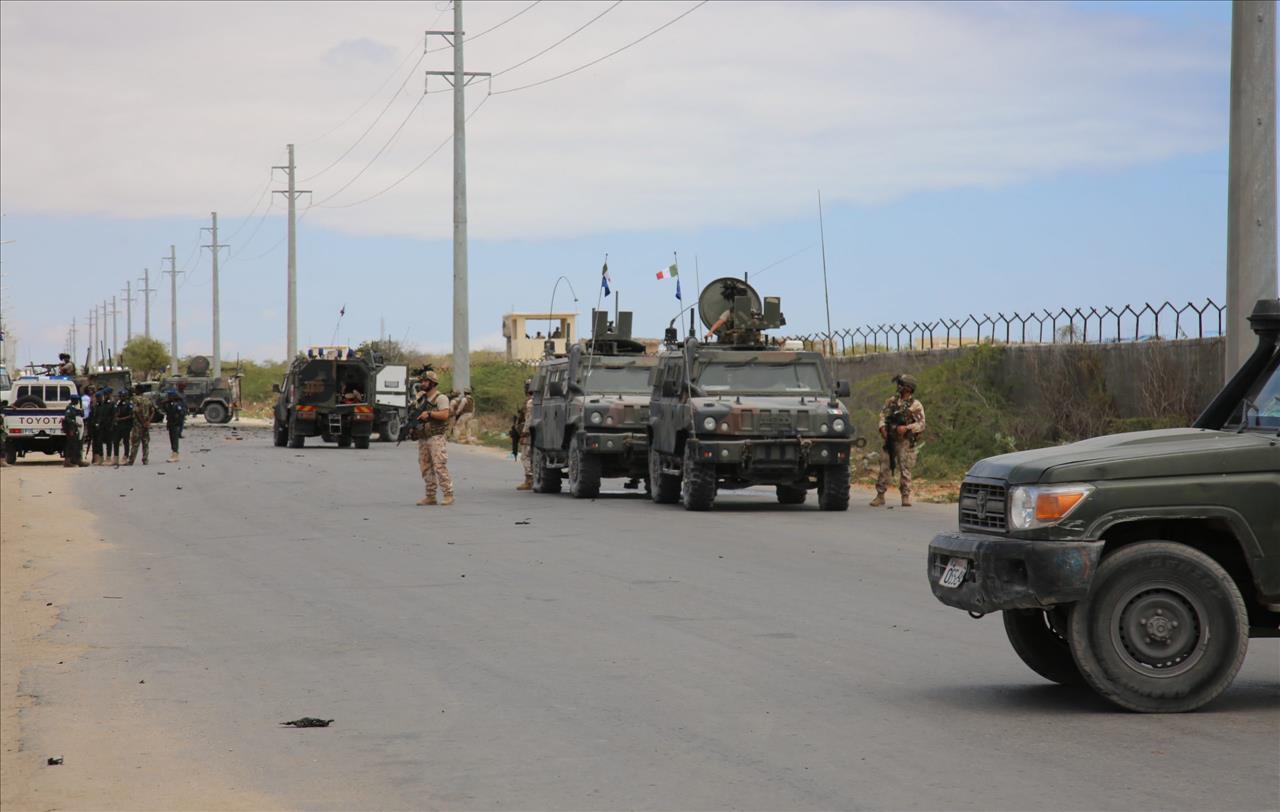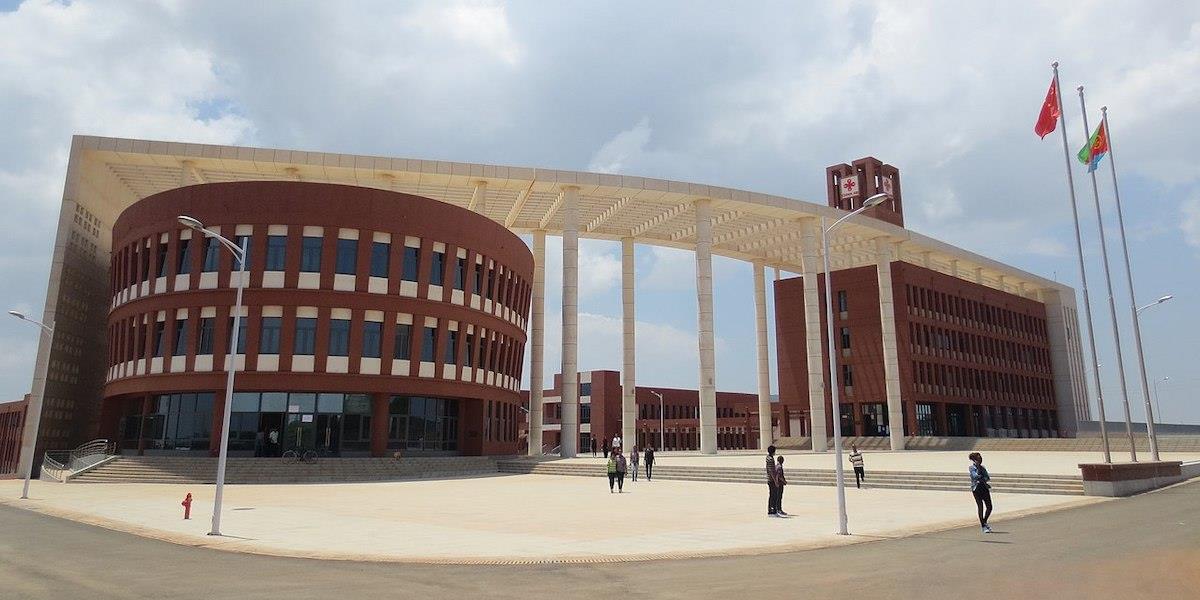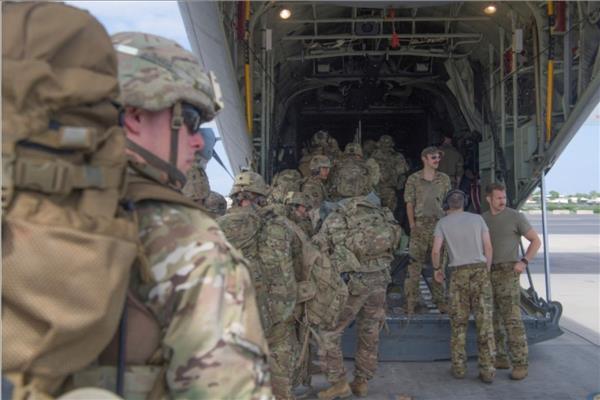
US Re-Entry Into Somalia Aims At Russia, China
The United States has announced it will resume a limited military presence in Somalia . The former administration withdrew troops from the country in 2020. The mission of the American soldiers is still what it has been for the last 15 years : to advise and assist Somali forces.
US troops will not be directly involved in conflict. Their number, 450 to 500 , is smaller than the last deployment.
The decision to redeploy in Somalia might appear to be surprising, for two important reasons. First, US President Joe Biden promised during his campaign to avoid the “forever wars” against terror lasting since 2002.
None of these wars were ever fully won and remain unpopular with the US electorate. It is also surprising in the light of moves to restructure the US military to meet a threat from China .
What better explains this decision, however, is the renewed emphasis on the old rivalry with Russia since Russia's Ukrainian intervention.
Announcing the redeployment, the Pentagon claimed it was partly for operational security. After their withdrawal in 2020, American special forces continued to train Somali soldiers outside Somalia, and at times traveled in and out of the country.
The Pentagon said the redeployment would end the ad hoc support by creating bases inside Somalia.
Unofficially, American officials have claimed that the redeployment is due to worsening security conditions in Somalia . This argument is open to question: the security situation is in reality relatively stable.
What is without doubt is that the deployment will have a direct influence on US-Russian rivalries in the region.

A roadblock is set up after al-Qaeda affiliated al-Shabaab militants stormed the Ballidogle American special forces military base on September, 2019. Photo: AFP Military situation in Somalia
Somalia's security landscape has not changed much since the US pullout over the previous year. The frontlines between the al-Qaeda affiliated Harakat al-Shabaab, the Somali government and the Forces of the African Union in Somalia have remained largely the same during the American absence.
So has the rate of terror attacks . Al-Shabaab has not expanded its territories, although it does exercise control in areas supposedly under government control.
Several researchers have reported that al-Shabaab is booming economically and is able to infiltrate the Somali security services. But this was also the case before the American withdrawal from Somalia.
What has changed is the international setting. Over the past few years, China-US rivalry has intensified. And over the past year, US-Russia rivalry has exploded, partly influenced by the outbreak of the Ukraine war.
These rivalries have large-scale impacts on the Horn of Africa.
It is notable that the American redeployment announcement came days after the electoral defeat of Somali President Mohamed Abdullahi Mohamed (“Farmaajo”) . The former Somali president was a close ally of Russia's new friends in the Horn of Africa – Ethiopia and Eritrea.
The newly-elected Somali president is much cooler towards Ethiopia and Eritrea. He has also pointedly welcomed the US redeployment.

Former Somali leader Mohamed Abdullahi Mohamed 'Farmaajo .' Post-Ukrainian reality in the Horn of Africa
Farmaajo enjoyed a close alliance with Ethiopian president Abiy Ahmed and Eritrea's President Issayas Afeworki. Ethiopian forces helped Farmaajo insert his candidates in states hostile to him by, for example, suppressing his opponents.
This was the case in Somalia's southwest regional state during the election there in 2018. They also backed Farmaajo against his political rival President Ahmed“Madobe” of the Somali Jubaland regional state in 2019.
In return, Farmaajo sent his Somali forces to fight on the side of Abiy Ahmed in the Ethiopian civil war. And Issayas Afeworki intervened in Ethiopia's civil war and trained Somali forces .
The Ethiopian civil war and the Ukrainian war increasingly saw the United States at odds with this tripartite alliance. First, the US criticized the Ethiopian government for its actions in Tigray, which the United States saw as heavy-handed and filled with human rights transgressions.
The US special envoy to the Horn of Africa stated :
The worsening US-Ethiopian relations were also fuelled by a Russian military cooperation agreement with Ethiopia. This came in a period when Ethiopia had lost a lot of Russian-produced materials in the battlefields of Tigray.
Anti-American demonstrations took place in Addis Ababa, with Russian flags and pro-Russian slogans . And the US imposed sanctions on Eritrean and Ethiopian leaders.
The relationship between the US and Eritrea and Ethiopia was worsening before the Ukrainian war. When the Ukrainian war broke out, Eritrea fully supported Russia at the United Nations, while Ethiopia abstained from a vote condemning the action.
That's not all. The US was also worried about Chinese investments to secure a naval base in Eritrea.

New buildings of the Eritrea Institute of Technology built with Chinese help between 2014 and 2016. Photo: WikiCommons US deployment timing
The timing of the American redeployment in Somalia has two possible explanations in my view. It might have been delayed until after the recent elections in order to insulate it from local politics.
Or one could see it as the US way to shore up a president with the will and potential to withstand the Russian-backed alliance of Eritrea and Ethiopia in the Horn. That would in turn shore up the US and its allies against Russia.
The latter point will be an outcome of the deployment anyway. It may well turn out to be the most important outcome, given that US engagement over 13 years has failed to bring about the end of al-Shabaab.
The insurgents remain strong and rich but short of the ability to overrun the Somali government.
Stig Jarle Hansen is Associate Professor of International Relations, Norwegian University of Life Sciences .
This article is republished from The Conversation under a Creative Commons license. Read the original article .

Legal Disclaimer:
MENAFN provides the
information “as is” without warranty of any kind. We do not accept
any responsibility or liability for the accuracy, content, images,
videos, licenses, completeness, legality, or reliability of the information
contained in this article. If you have any complaints or copyright
issues related to this article, kindly contact the provider above.
Most popular stories
Market Research
- Thinkmarkets Adds Synthetic Indices To Its Product Offering
- Ethereum Startup Agoralend Opens Fresh Fundraise After Oversubscribed $300,000 Round.
- KOR Closes Series B Funding To Accelerate Global Growth
- Wise Wolves Corporation Launches Unified Brand To Power The Next Era Of Cross-Border Finance
- Lombard And Story Partner To Revolutionize Creator Economy Via Bitcoin-Backed Infrastructure
- FBS AI Assistant Helps Traders Skip Market Noise And Focus On Strategy




















Comments
No comment